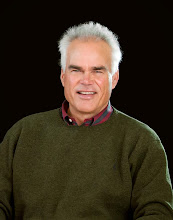The Internal Revenue Service
provides a special provision for real estate investors called Internal Revenue
Code 1031 exchanges (1031 Exchanges). These exchanges allow the potential
for an investor to sell one investment property and purchase another one, and
to defer the taxes into the next property. These 1031 exchanges are very
popular when there is significant equity in the property to be sold, and with
large gains that can be deferred. The ramifications of this are
extensive—instead of paying capital gains taxes each time an investment
property sells, a person has the freedom to defer the capital gains taxes and
allow growth on the investment. Investment properties can be exchanged
from one into the next, throughout a persons life. When investors
understand the benefits within the IRS tax code, they may more
strategically invest in real estate and minimize the amounts of taxes paid.
As the real estate market continues
to rebound after the recent difficult years, we are once again seeing 1031
exchanges utilized more often. Recently, we represented clients who sold a
commercial property in California, and replaced it with a number of residential
homes in Durango. These investment homes will provide their income for
retirement, and they were able to fully utilize their 1031 exchange, and defer
the taxes into the residential properties. Under the 1031 provision, the
IRS allows a person to defer taxes when a property is sold and another in "like
kind" is purchased. Generally, real estate transactions will be “like
kind” to one another. Just like above, commercial can be exchanged into
residential, or it could have been exchanged into vacant land. A few
caveats exist; for example, a property within the United States is not “like
kind” to a property outside the United States.
A neutral third party, called a
Qualified Intermediary, facilitates the transfer of the exchanges. We have
utilized Cooney & Associates locally, and Tim Cooney is an expert on 1031
exchanges. He combines his knowledge as an accountant, as well as his
experience with 1031 exchanges. We have also referred CLX Exchange
Accommodators, and they have been successfully handling 1031 exchanges in
Durango since 1991, and Rob Ptolemy is a Certified Exchange Specialist (CES).
There are many choices for Qualified Intermediaries, and a person should
investigate the knowledge and experience, before making a commitment.
In order to apply section
1031, an investor must identify the new property within 45 days of the sale of
the original property, and their Qualified Intermediary can help them with the
rules on numbers of designated properties. The transaction must be
completed within 180 days of the sale (or the tax return deadline of the year
the relinquished property was sold, whichever is first). Additionally, the new
property must be of equal or greater value than the current property to have
full deferral of taxes, and all funds from the relinquished property sale must
be used to have a full deferral.




No comments:
Post a Comment